The best travel camera in 2024
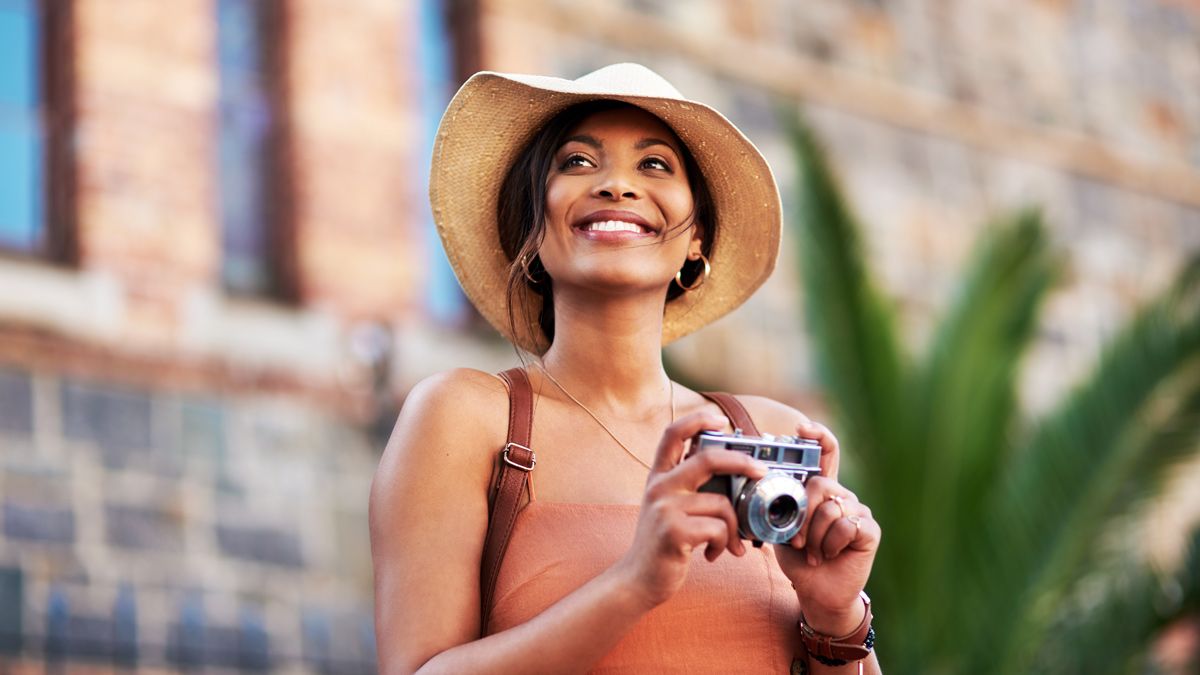
The best travel cameras have to do one crucial thing: be better than your phone. After all, your phone is almost certainly going to be in your pocket anyway – and it’s almost certainly got a great camera.
That means the best travel cameras need to combine compactness with image quality, advanced features with simple operation, and ideally the ability to get your files onto your phone, tablet, or laptop quickly, to share your holiday photos and vacation videos. Having a camera that’s safe to take on the beach, in the snow, or even in the sea could be another key consideration!
Even though the best camera phones can produce great images, you just don’t get the same quality as you would if shooting with one of the best point-and-shoots or best mirrorless cameras. Smartphones are restricted by smaller sensors offering lower still and video quality, reduced low light performance, and minimal control over depth of field (for those blurry backgrounds).
The type of camera you pick comes down to personal preference and budget. To help you decide which is best, we’ll look at mirrorless cameras that offer better image quality and more versatility than compact systems but at the cost of increased size and weight. Compact cameras, perfect for keeping on you at all times, won’t weigh you down, and are really simple to use – although they have smaller sensors and fixed lenses. And finally, action cameras that are robust cameras made for wild adventuring!

Gareth is the Reviews Editor at Digital Camera World, and the person in charge of approving all the latest camera-related tech. He never misses an opportunity to travel, or an excuse to take photos while traveling, so is best placed to judge what are the best travel cameras for all sorts of different vacations and adventures.
The Quick List
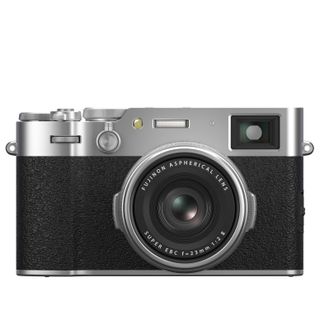
Travel cameras should be small and light, but not lacking in features for amazing photos and video. The Fujifilm X100VI ticks all of those boxes, with a diminutive size, but 40MP images and 6.2K video. And does all this while looking great, with some stunning retro charm.
Read more below ↓
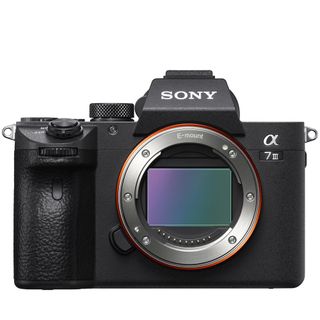
Despite aging a little, the Sony A7 III still offers some features that are competitive with new models like IBIS, auto-tracking, and 4K video. Best of all, the camera is incredibly well-priced, making it the best option for traveling without worrying too much about eye-wateringly expensive kit.
Read more below ↓
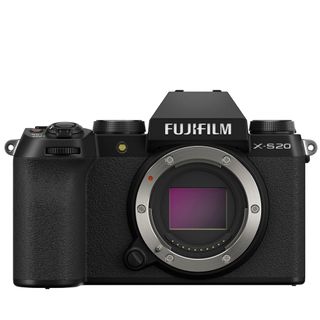
The Fujifilm X-S20 is a camera for everyone, with great quality stills, but is set apart by its deceptively powerful video skills. This makes the X-S20 the perfect travel camera for any hybrid creator who is a versatile and lightweight camera, all in a price tag that won’t break the bank.
Read more below ↓
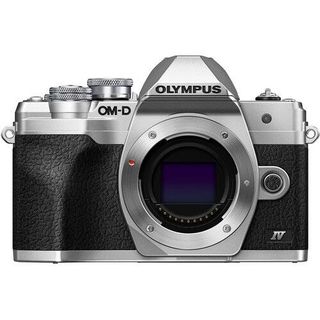
4. Olympus OM-D E-M10 Mark IV
When picking the best travel camera, we’re focusing on portability. If you want to fit a whole photographic kit – that’s a camera and several lenses into a bag, then the dinky but mighty Olympus OM-D E-M10 Mark IV is one of the best portable cameras around.
Read more below ↓
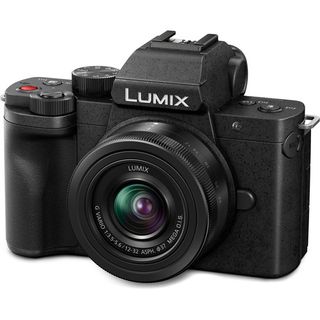
If you want a small camera that shoots great stills and video, and cost costs the earth the Panasonic Lumix G100 is the best budget option out there for travel. There is also the slightly newer G100D, which is much the same, but with a USB-C port and upgraded EVF.
Read more below ↓
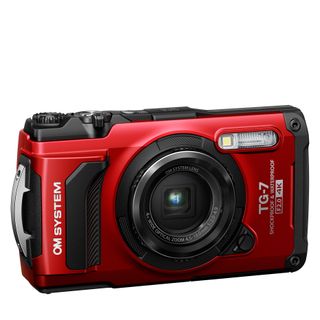
If you’re planning on a coastal adventure then you need a camera that is fully waterproof and rugged enough to take on the most challenging adventures. This camera offers better stills than your average action cam, so if photos are your main priority – the Tough TG-7 is for you.
Read more below ↓
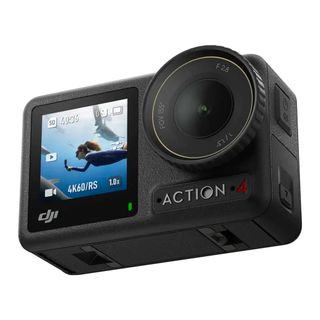
If you are looking for a camera that can withstand some serious adventuring, then look no further than action cameras, the best of the bunch being the Osmo Action 4. The Osmo 4 offers an incredibly wide field of view, image stabilization, and waterproofing for action-packed vacations.
Read more below ↓
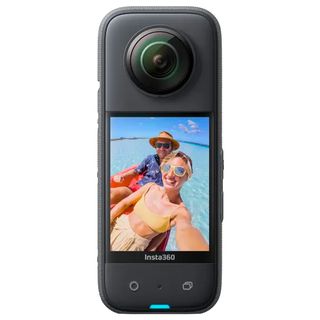
If you want to remember every little bit of your vacation, then you can’t go wrong with a 360º camera to capture not what only is going on in front of you, but all around you. The Insta360 X3 is the best all-encompassing camera you can buy, best of all it is easy to slip into a pocket or bag for travel.
Read more below ↓
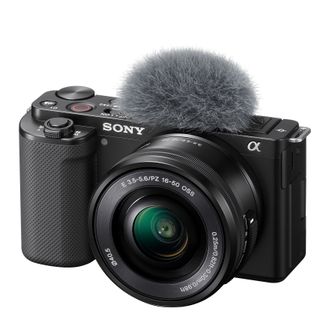
If you are looking for a small yet mighty all-in-one camera with quality video and audio made to go straight on social media or YouTube then the Sony ZV-E10 is the best choice. It does take decent pictures, but if you are looking for something more hybrid, check out the X-S20 above.
Read more below ↓
The best travel camera in 2024
Why you can trust Digital Camera World
Our expert reviewers spend hours testing and comparing products and services so you can choose the best for you. Find out how we test.
Best compact travel camera
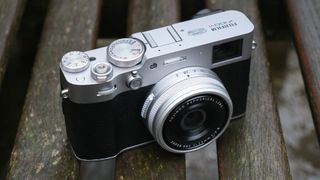
Buy it if:
✅ You want a pocketable camera: the Fujifilm X100VI is a compact camera, the camera, and lens are so small that you can easily slip this into a jacket pocket.
✅ You want a camera that looks good: This is one of the best-looking cameras you can buy with the beautiful retro looks of old-school film cameras.
Don’t buy it if:
❌ You want to change lenses: the lens is fixed on the X100VI, so you are stuck with the 23mm focal length, although its digital cropping modes give the illusion of more focal lengths
❌ You want a cheap travel camera: the X100VI does not come cheap, and there are options that produce similar quality if you don’t mind a different style of camera.
If you are looking for a camera for traveling, then one of the major things to look out for is something small and lightweight that can easily slip into a bag or a jacket pocket and won’t be a drag to carry around for long periods – enter the Fujifilm’s X100VI. The X100VI is the latest in Fujifilm’s line of premium compact cameras, hallmarked for their brilliant image quality, vintage looks, and pocketable size.
The X100VI is a fixed-lens camera, which means that it has a single lens that can’t be changed. The lens is 23mm, or equivalent to a 35mm length lens on on a full-frame camera, a perfect length for travel photography as it is wide enough to get in landscapes and street scenes, but narrow enough for portraits and family shots. While there are converters available for the X100V to change the length of the lens, I find these are not worth the money.
The camera is beautiful to hold, made with premium materials, and with a wonderful hybrid optical viewfinder that shows either the real picture or how it looks through the sensor with a flick of a button. This premium camera comes at a premium cost though, and it is not the cheapest on this list, but for the build quality and features, it justifies its higher price.
The X100V packs in some lovely 40.2MP photos, and has a clever lens to digitally zoom and crop before taking a photo, cutting some of the work out if you are keen to share online quickly. The camera also has 6.2K, 4K, or HD video with 240 frames per second, so you can get creative with high-quality or slow-motion video on your travels. There is also human, animal, bird, and vehicle autofocus tracking, so you can snap away with confidence at anything you come across. Finally, image stabilization helps cut out hand jitters in low light or shooting video, for more stable footage.
And for those who want to share travel snaps as you go, you get access to Fujifilm’s awesome film simulations and custom recipes, taking some of the work out of editing, and with WiFi and Bluetooth connectivity and the Fujifilm X App, you can quickly share ready to post photos and video to social from your phone.
The main downside is the Fujifilm X100VI’s slick design however for traveling is the camera is not fully water resistant unless you buy an additional filter ring and filter, in fact you can’t use any filters on this lens without the extra purchase, but for the price of this camera, I feel this should really come in the box.
Read our full Fujifilm X100VI review
Best full frame on a budget
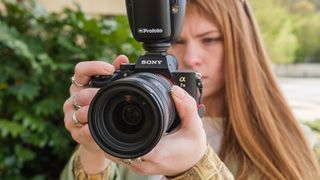
Buy it if:
✅ You want full frame quality: full frame cameras can produce more focus separation and are better in low light, the A7 III is the most affordable step into full frame.
✅ You want a camera to use outside of traveling: the A7 III is a pro-level camera that is not just for travel, you can shoot brilliant photos all year round with a multitude of lenses available for different subjects.
Don’t buy it if:
❌ You don’t want the expense of lenses: the cost of lenses can add up, especially ones for full-frame cameras, if you want to keep costs low, choose a fixed lens camera or an option with smaller cheaper lenses.
❌ You want a small camera: the A7 III isn’t huge, but it also isn’t small. With a lens attached, it is going to take up quite a bit of room in a bag, and won’t be sliding in any pocket.
The Sony A7 III might be one of the oldest Sony cameras still around, it has even been replaced by a newer Sony A7 VI, but it more than holds its own today. Any photographer looking for an excellent full-frame hybrid camera for traveling should seriously consider this camera as an option.
The camera still has a very competitive 24.2MP back-illuminated image sensor, which is paired with an image processor, delivers stunning tonal range, and makes high ISO settings possible, which anyone who is shooting a lot in low light on their travels will really appreciate. A 5-axis image stabilization system also delivers less shake when shooting at night, or capturing video. If you are also looking to capture video footage then the camera has very capable 4K video.
While not the latest algorithms, the A7 III also has solid human face and eye tracking, coupled with a 696-point AF system, you can take reliably focused photos of your friends, family, or any interesting folk you see out on the streets.
Whilst handing on the camera is very good, it is a little off balance with big pro lenses, although Sony’s lens range is extensive and there are lots of smaller primes that suit this camera perfectly for those who don’t want to carry a lot while traveling. If size is less of a concern then superzoom lenses like the Sony FE 24-240mm will empower you to capture everything from near to far.
The best thing about this option I think is the price. It’s the best-value full-frame camera out there – and if you are traveling then often how much your camera costs is not something you want playing on your mind.
Read our full Sony A7 III review
Best hybrid travel camera
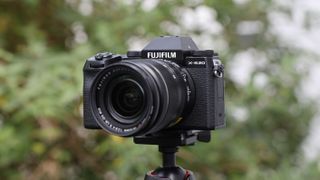
Buy it if:
✅ You shoot video and photos: the Fujifilm X-S20 is the best of both worlds, with great-looking photos, but frankly awesome video skills too!
✅ You want to balance price and features: the X-S20 offers a lot for its price, and it is one of the best-value cameras around, you will especially struggle to find matching video specs at this price point.
Don’t buy it if:
❌ You don’t really care about video: there are other options that might suit photographers more than the X-S20 with higher megapixel counts.
❌ You need weather sealing: the X-S20 is not weather-sealed, so if you plan to get adventurous, a camera that can handle dust and water might be a better choice.
When I tested the Fujifilm X-S20 I was just so impressed at the amount of features that Fujifilm had managed to squeeze into its petite body – it’s not just a stills camera, it also one of the best video cameras available, and best of all, it is really well priced! I think this is the best camera for any traveler looking to shoot a mix of stills and videos on the market right now.
Fujifilm chose not to update the X-Trans IV sensor from the X-S10, but this sensor despite its age still holds up very well today when it comes to stills. The X-S20 is also able to use Fujifilm’s excellent film simulations and programmable film recipes to create ready-to-use images straight from the camera, which makes any regular social media posting that much easier. The new X-Processor 5 also brings brand new subject recognition and tracking autofocus, making taking photos on the fly quicker and easier.
But despite its compact size, the X-S20 is a deceptively powerful video camera. The new processor combined with the modest resolution sensor means the X-S20 is capable of 6K video using the entire sensor (open-gate). The camera is also capable of numerous codecs for getting in-depth with color grading. The subject recognition and tracking also carries through into videos and the X-S20 also has dedicated vlogging features.
Some might prefer the classic retro style like the X-T5 or X-T30 II, but the X-S20 is a much more user-friendly camera, with useful features like a fully articulating screen. Handling is great, and the camera pairs really well with Fujifilm’s small zoom and prime lenses, making traveling light with a kitted-out X-S20 a little easier. While the price is a little higher than the X-S10 that preceded it, I think the price bump is justified as this is one capable camera for traveling.
Read more: Fujifilm X-S20 review
Best travel camera for size
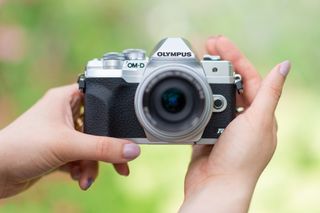
Buy it if:
✅ You want a small system: the whole OM Micro Four Thirds system is tiny, with small cameras and lenses, so you can take a lot more gear to cover more subjects.
✅ You want a good-looking camera: with a cool vintage style based on Olympus’s OM film cameras, the E-M10 IV looks as good as the footage it shoots.
Don’t buy it if:
❌ You shoot a lot in low light: the Micro Four Thirds sensor in the E-M10 IV doesn’t handle low light as well as larger sensors, not good for frequent nighttime shooters.
❌ You won’t use the retro dials: if you are looking for just fast auto controls then the dials on the top of the E-M10 IV will be largely redundant for your needs.
When picking the best travel camera, we’re focusing on portability, and the dinky but mighty Olympus OM-D E-M10 Mark IV is one of the best portable cameras around if you are looking for a whole system including lenses that can easily slip into a bag. The best Olympus lenses include positively tiny optics that can go a long way for travel photography, helping you keep your kit and weight size down. So if you are the type of carry-on-only travel photographer but with big photography ambitions then this is for you.
Not only does it have an incredibly lightweight body, but the camera will look great on your travels too, with a cool retro design that harks back to Olympus’s long pedigree in film cameras. The camera has tactile dial-led controls for anyone who wants to get creative with manual photography, although don’t let that fool you into thinking the camera is complicated, as there are lots of automatic modes and helpful features built into the camera.
The OM-D E-M10 Mark IV uses the smaller but still powerful Micro Four Thirds sensor. This has some slight disadvantages in terms of low-light capabilities, so if you like to go out a lot at night when you travel, then a larger sensor might be better for you.
But Micro Four Thirds does have one big advantage, it effectively doubles the focal length of any lens mounted to the camera; so a 50mm will behave like a 100mm, so if you are about to head off on safari, then this could make all the difference to getting up close to wildlife. Its snappy burst shooting, its accurate autofocus, and its impressive 4K video will also all assist you with creating amazing content. It’s a terrific all-around camera.
Read our full Olympus OM-D E-M10 Mark IV review
Best travel camera on a budget
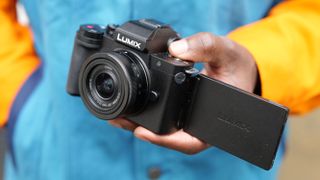
Buy it if:
✅ You want an affordable camera: the Lumix G100 is a great deal for the features it offers, and an affordable way to get great travel snaps.
✅ You want a range of small lenses: there are a lot of Micro Four Thirds lenses, so there is something for every occasion, and best of all, they tend to be on the smaller side for easy travel.
Don’t buy it if:
❌ You want the very latest tech: the G100 is a little on the older side and doesn’t have Panasonic’s latest autofocus, which puts it a little behind the competition.
❌ You want more serious creative video: intended as a hybrid camera, there are lots of video-focused features, but the camera lacks IBIS and a headphone jack/USB-C found in rivals.
Sometimes, you just want to create quality images and video while you are traveling, but you don’t want to pay a small fortune for a camera to do so, or risk carrying around an expensive camera. The Panasonic Lumix G100 is the best camera you can get for traveling that offers all the quality features you will need but at an affordable price.
The G100 is a super-small, super-cute camera with a Micro Four Thirds sensor. It is still easy to capture high-quality video and stills with simple controls, menus, and its approachable button layout. The camera can be paired with numerous dinky Micro Four Thirds lenses too, especially small pancake lenses to keep the overall size down. Micro Four Thirds also has the benefit of doubling the focal length, so 100mm becomes 200mm, so you can pair the G100 camera with telephoto lenses for capturing far away subjects like wildlife without having to carry huge lenses.
A downside though is there is some compromise for the low price, and the G100 is not the most technically advanced camera on this list, and its autofocus uses Panasonic’s cruder contrast-detect technology, which is a little slower than other cameras and is notorious for “pulsing” and “hunting” during video.
Despite this, the G100 is also a perfect camera for vloggers, with an articulating screen and ready to share footage. But while there’s an inherent risk of dumbing things down too much when creating a camera for social media creatives, Panasonic has avoided that pitfall with the Lumix G100, and this is a great camera if you’re just as interested in vlogging as you are in travel photography.
Read our full Panasonic Lumix G100 review
Best waterproof compact travel camera

Buy it if:
✅ You want a rugged adventure camera: the TG-7 can certainly withstand some serious adventuring with a rugged water/dust/freeze/drop-proof build.
✅ You want a photography-first adventure camera: the TG-7 puts photography first and foremost, offering a better experience than smaller fiddly action cameras.
Don’t buy it if:
❌ You want to strap the camera to things: while action cameras have numerous accessories to strap to your sports equipment, there is far less for the bigger TG-7.
❌ You only care about video: if you are just looking for the best rugged video camera for travel, then action cameras have you covered (see below).
Following the acquisition of Olympus’s camera division, the OM System TG-7 is essentially an update to the much-loved Olympus Tough TG-6 under a new brand name. Although that camera has long been the top-regarded travel compact for adventurers who are as invested in photos as video. Action cameras might be smaller and just as hardy, but can’t compete with the TG-7 for photography experience.
The TG-7 is ready for any travel adventure and is water-proof, dust-proof, crush-proof, drop-proof, and freeze-proof, so whether your hiking, climbing, swimming, or otherwise take you to the hottest deserts to the coldest tundras, the camera should come out the other side unscathed.
The TG-7 might have a relatively conservative 12MP resolution, although this helps dramatically when it comes to low-light images, as each pixel is larger allowing it to capture more light. Why is this important? Well if you are shooting in darker underwater environments, in gloomy forests, or at night, then you will get higher-quality images.
The Touch also has RAW images, so you can get even more creative control over the final edit of your images. The camera also has a pretty incredible macro mode as well if you find some small details on your travels that you have to capture.
While it might not be up to the same standard as the best action cameras for video (see below for that), the Tough can capture decent 4K video, and will get some perfectly serviceable footage for social and YouTube of your wild adventures!
Read our full OM System Tough TG-7 review
Best action camera for travel
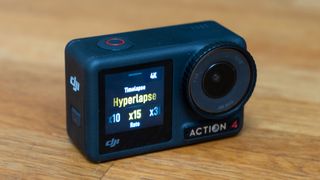
Buy it if:
✅ You want a camera that can keep up with your travel adventures: the Osmo 4 is hardy enough for whatever conditions you throw at it, weather-sealed and fantastic stabilized footage.
✅ You want a tiny camera: action cameras like the Osmo 4 are great as they are so small they are effortless to travel with.
Don’t buy it if:
❌ You want to shoot high quality photos: the 12MP photos from the Osmo 4 can’t compete with more dedicated cameras, and the wide angle lens needs lots of corrections.
❌ You need accessories: the market for DJI accessories isn’t as big as the more famous GoPro, so if you need niche or cheaper accessories, that might be the brand to choose.
For most adventurer-creators, the Osmo Action 4 is the perfect balance of quality and price. Stabilized 4K video looks great and the camera can take a lot – not just rough and tumble but temperature extremes and it’s waterproof to 16m without a case. Best of all, it has a larger image sensor than any other camera on the list, so it is better in lower light, making it more flexible.
DJI did have an interesting experiment with modular design, now seemingly abandoned, with the Action 2, but they do retain powerful magnetic mounts which can even partially survive the heat of an oven (we tried accidentally – see our full review).
Like the more famous competition, DJI has high-quality horizon balancing and image stabilization, which has improved on the Action 3. The resolution limit is 4K, but in practice, this is the ideal resolution for action (and the limit of almost all TVs). More useful is the 120fps capability (or 240fps at 1080P).
The fact that Action 4’s isn’t interwoven with subscription software is one we wholeheartedly appreciate, too, but GoPro seem to finally growing out of this.
Read our full DJI Osmo Action 4 review
Best 360º camera for travel
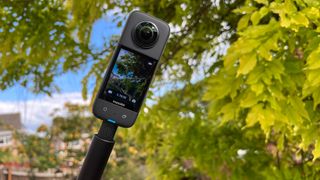
Buy it if:
✅ You want to capture everything: the Insta360 X3 can capture all that goes on around you, perfect for capturing immersive travel content.
✅ You want to travel light: the Insta360 X3 is very small and lightweight, and won’t trouble your carry-on bag limits.
Don’t buy it if:
❌ You want a versatile camera: the Insta360 X3 is made for one thing, and that is great 360º footage, if you want to capture more, you might need to bring a second camera.
❌ You want artistic images: the Insta360 X3 has big 72MP images but the small sensor means they aren’t as creative as a bigger camera.
There are times when handling even an action camera’s wide-angle lens becomes a problem, and that’s where a 360-degree action camera can step in. With two back-to-back lenses and enough smarts to eliminate a selfie stick from the footage, this almost magic camera can capture an image from a point within reach looking any direction you see fit.
I tried it with the bike attachment – which holds the camera a little way in front of the bike, over the front wheel – and was amazed at the footage which makes it look like I’m cycling toward a perfectly controlled drone. Better still, by syncing with my phone I could draw GPS data and have it overlaid, in the form of a speedometer, by the Insta360 app before sharing.
The only real worry is how naked those glass lenses are when the camera is in use; the joy of re-positioning the camera angle after the fact can be hours of fun. 5.7K is good enough for sharing, but more resolution would help pro work.
Read our full Insta 360 X3 review for more details
Best for travel vloggers
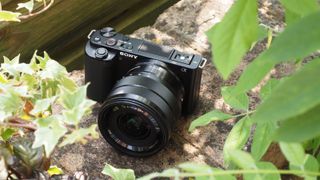
Buy it if:
✅ You want ready-to-share footage: this Sony is made for capturing footage with minimal editing to get up on YouTube and social media straight away.
✅ You want excellent audio: the ZV-E10 has built-in stereo microphones that capture some of the best audio possible on a camera without external mics.
Don’t buy it if:
❌ You are more interested in photos: the ZV-E10 is not a bad photography camera, but its video focused build means other cameras are better for stills shooters.
❌ You want a viewfinder for framing: if you love a viewfinder for framing shots, then the Sony A6400 is almost the same camera, but with an EVF.
The ZV-E10 makes for an excellent traveler’s camera and is one of the cheapest vlogging-focused cameras yet. Combined with its slim dimensions, and wide choice of lenses, this makes it a perfect choice for travelers who want to shoot a lot of video.
The big selling point of the ZV-E10 over other cameras capable of similar video is that the ZV-E10 comes with sophisticated built-in mics and a clip-on windshield for noise reduction, making it much easier to get clean audio on your vlogs even outdoors – which works excellently. Sony has put its years of audio experience into this camera and it shows.
The ZV-E10’s 4K UHD video is of excellent quality too, and as we’ve come to expect from Sony, the autofocus is best in class, whether shooting video or stills. The camera has tracking modes for easy autofocus and digital image stabilization that crops your footage slightly but attempts to iron out any shake, which works well except for in very heavy movement.
And a point worth mentioning is that, while the ZV-E10 may be optimized for vlogging, it’s still a capable stills camera with a 24MP sensor, and 11fps burst shooting, so photographers needed worry about restricting themselves with it.
However, if you are more keen on photography than video, cameras in the Sony a6xxx range (like the Sony a6400) offer almost the same specs, but with a viewfinder, but you do lose the built-in stereo mics. Making it a tough choice for a hybrid shooter that might want the best of both worlds.
Read our full Sony ZV-E10 review
How to choose the right travel camera
These are five key things to look out for when choosing the right travel camera for your needs.
1) Image quality: Ask yourself how you will use any photos or videos you capture. If you only plan to share content online on social media then any of the above cameras will be suitable. If you plan to print your pictures, though, then mirrorless cameras with larger sensors and higher megapixel counts will produce better-quality results.
2) Focal range: What kind of range do you need for your traveling activities? Compact cameras can have impressive zoom ranges, but to achieve their tiny size they often lack quality compared to mirrorless cameras. For mirrorless cameras, what lenses are available? So-called standard zooms are a great option for all types of travel, but they can also be large and heavy. A wide-angle lens might be best for capturing cities and landscapes, or if you are going to see wildlife or a sporting event then a compact telephoto lens might be best.
3) Size and weight: If you’re going on vacation then the last thing you want to take is a heavy kit – especially given things like baggage restrictions when traveling. With that in mind, both your camera and lens(es) need to be small and light. If you want something that can fit in your pocket, get a compact camera – but if you don’t mind taking a bag, a mirrorless system with one or two lenses could be more versatile.
4) Simplicity: Don’t want to get bogged down with camera settings? Most modern cameras have a range of auto modes – especially compact cameras, which take away the stress. Advanced modes and complicated controls don’t usually mix with spur-of-the-moment snaps, so decide what is important to you and pick your camera based on that.
5) Price: The cameras in our list have a range of prices, and we try to include cameras that suit every budget. The price of a camera usually reflects its capabilities, although all the options listed here will take great images and video – so try to strike the right balance between what you need in a camera and what you can afford.
Is it better to use phone or camera for travel?
We covered this a little bit at the start of the article, but the answer is that it is always better to use a camera for stills or video when possible. So the question really becomes, “Do your travel plans make using a camera possible?” Phones are so small and quick to use that they go where cameras are too bulky and slow to shoot. A great compromise is a compact camera – or the Olympus Tough TG-6, which is a weather-proof camera that goes the places that you wouldn’t dare to use your phone!
Is a DSLR or mirrorless camera better for travel photography?
As a travel camera, mirrorless cameras are usually the better choice for most people. They are much small and lighter than DSLRs, and also usually have a selection of smaller and lighter lenses to match. This makes traveling easier as it takes up less space and weight in increasingly restricted carry-on bags. Mirrorless cameras also are generally newer than DSLRs and most likely have more modern technology, making photography and video easier to capture and of better quality.
What size camera lens is best for travel?
Again, this comes down to what your travel plans entail and what you plan to shoot. The kit lens that comes bundled with many cameras will cover the most commonly used focal ranges, so that’s a good place to start (though kit lenses do not deliver the best image quality). We recommend checking out the best lenses for travel photography to see what’s right for you.
How we test travel cameras
When we are reviewing cameras, we carefully think about what scenarios each camera could be used for. When considering which cameras would make ideal travel cameras, we judge each camera on how small and lightweight it is for easy packing and transport, as well as carrying for long periods of the day while out exploring.
We also consider the technical capabilities of each camera, and how suitable they are specifically for travel photography scenarios from beach vacations to safaris, to city breaks. Finally, we consider the price of the cameras to select options that cover a range of budgets and requirements.
We use our real-world experience with each camera and our in-depth camera knowledge to determine a final selection of top cameras that we would recommend as the ideal camera traveling companions.
Want to find out how we test and review DSLR and mirrorless cameras? We trial cameras both in real-world shooting scenarios and in carefully controlled lab conditions. Our lab tests will generally measure resolution, dynamic range, and signal-to-noise ratio, which gives us a benchmark by which to compare cameras.
Resolution is measured using ISO resolution charts, dynamic range is measured using DxO Analyzer test equipment and DxO Analyzer is also used for noise analysis across the camera’s ISO range. Our compact camera evaluations are based on real-world testing alone.
For our real-world testing, our reviewers spend time with each camera, testing it in a variety of shooting situations and providing their qualitative thoughts on how the camera was to use and evaluating the images and video it produced. Here’s an example of how we literally take a camera on vacation to evaluate it!
link






